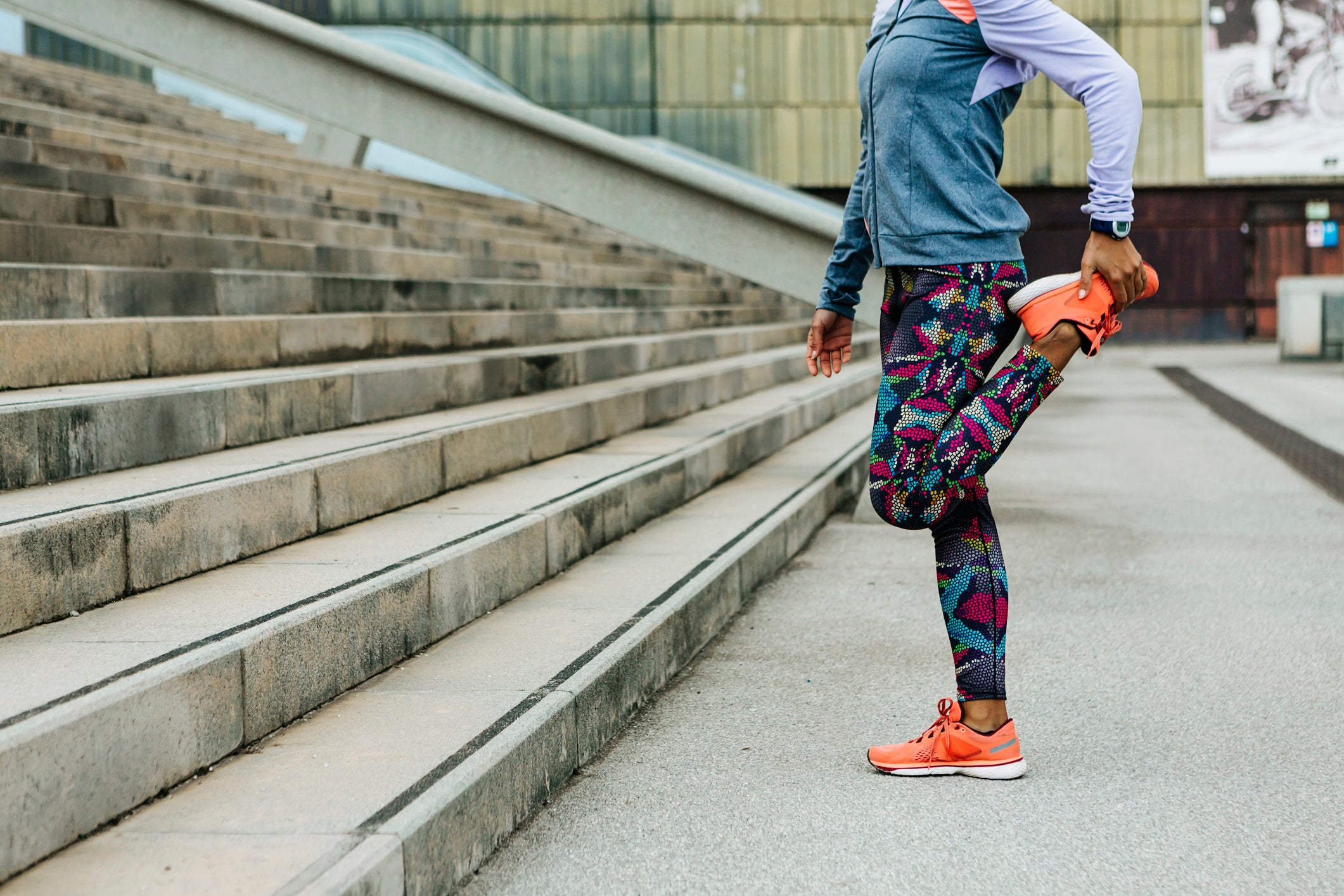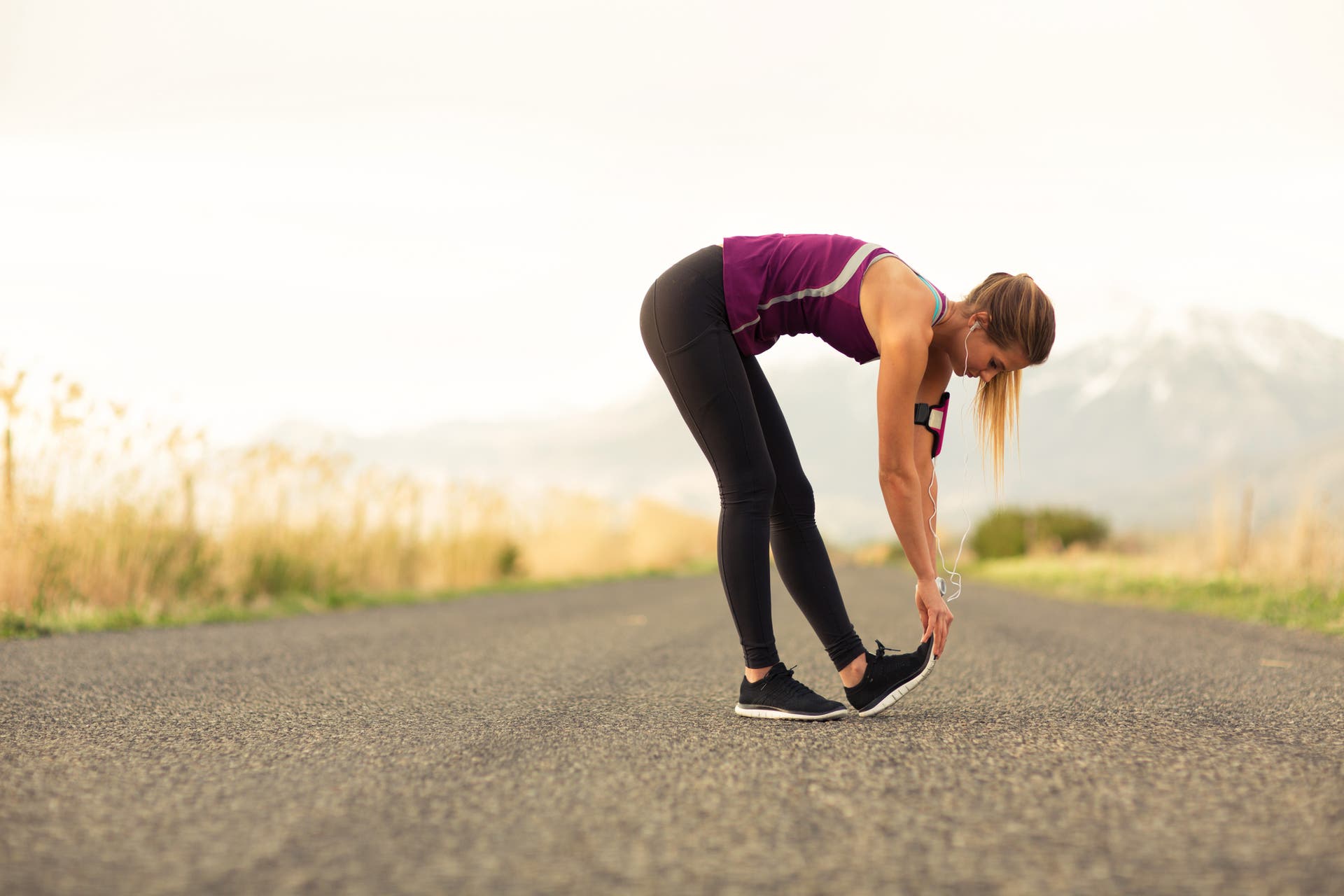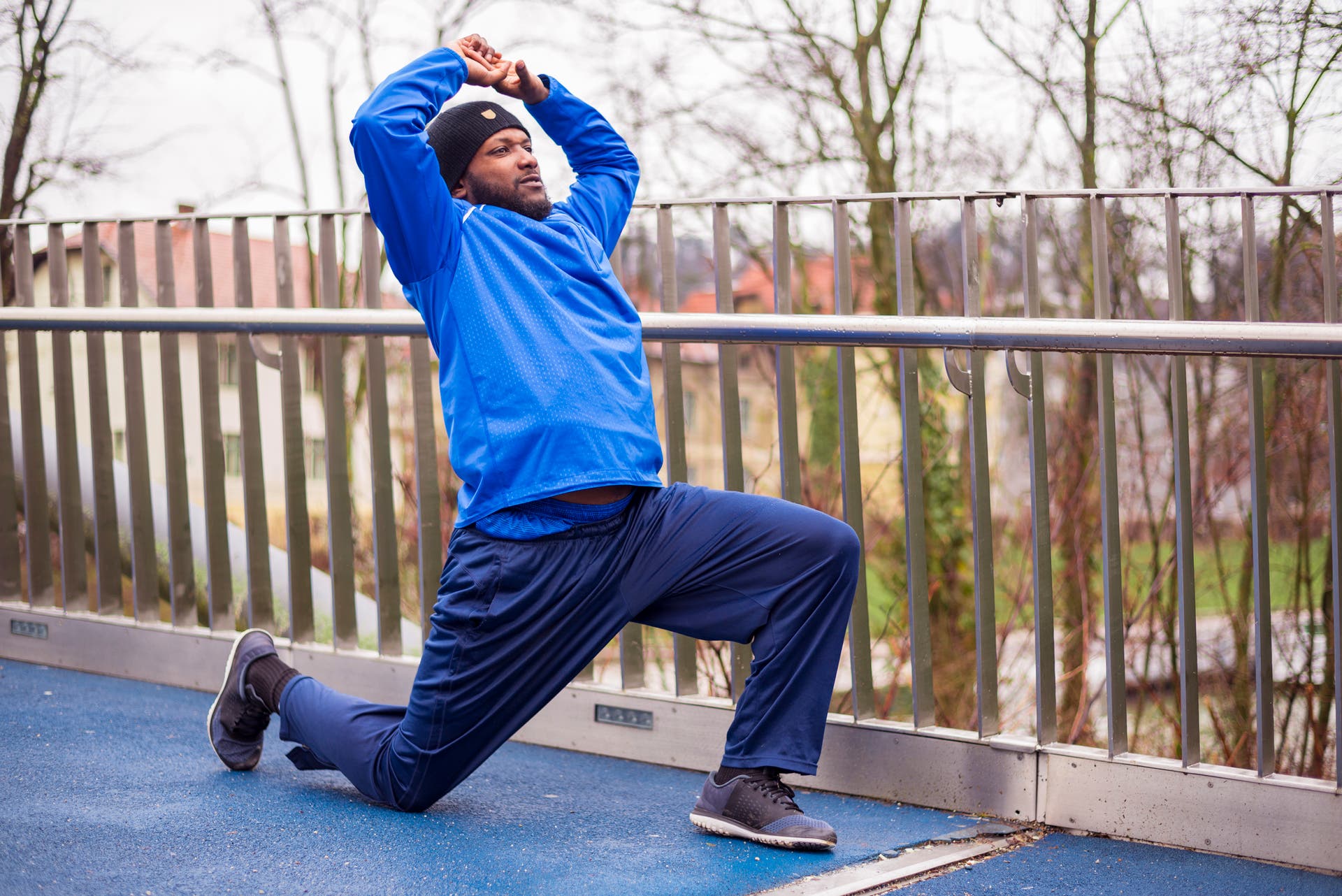Runner’s Knee? Tight Hip Flexors? Learn how to prevent common upper leg injuries.

(Photo: Getty Images)
As runners, we place a lot of emphasis on taking care of our lower legs. But we can’t forget about the larger muscles, tendons and ligaments higher up, like hips, glutes and hamstrings. When one of these becomes tight, weak or overused, it can lead to a cascade of effects from back pain to issues in our calves and feet.
Here are the most common upper leg injuries in trail runners, and how to identify, prevent and treat them.
Patellofemoral Syndrome (a.k.a. Runner’s Knee)
When it comes to knees, runners can find themselves down a slippery slope because of how intertwined this area is with others. And knee pain can be hard to diagnose: is it just a tweak or something more serious? Most runners with knee pain complain of popping or pain when running or walking up or down hills, going up or down stairs, or standing up after sitting too long.
“Prolonged periods of sitting with a bent knee allow for inflammation to settle in, and then as the joint moves through a range of motion, creating irritation and friction against adjacent surfaces,” says Sarah Ceschin, DPT at PR Labs in Boulder, Colorado. “However, movement will reduce these injuries as the blood flow and adrenaline help reduce the tension and inflammation.”
According to Ceschin, knee pain often boils down to poor mechanics, tight quads and a weak posterior chain (glutes, hamstrings, calves).
“Because of the weaknesses, our IT band and patellar tendons do a poor job of transmitting or absorbing ground forces. This is why inflammation sets in,” she says. “If the muscles surrounding the IT band and patella are tight, both structures become slightly manipulated in their direction of pull, often rubbing closely on their boney neighbors.”
This recurring tightness causes the patella to be pulled in two different directions, resulting in inflammation.
How to Treat it: The solution? Stretching and strengthening – two things runners don’t often do enough of. Incorporate exercises into your routine such as glute bridges, step ups, split squats, hamstring curls and calf raises to strengthen the small stabilizer muscles around your knees.

Gluteal Tendinopathy
Glutes are composed of three different muscles: gluteus medius, maximus and minimus. All three play a key role in running gait and attach to tendons in the upper leg, which can lend itself to conditions like gluteal tendinopathy. You may feel this as lateral hip pain, stiffness or loss of strength.
“This is often confused with hamstring pain, hip bursitis and piriformis syndrome, but is actually an inflammatory condition of the gluteal tendon,” says Ceschin. She notes that this injury is more prevalent in female-identifying athletes because of biomechanical differences in pelvic alignment. Tendonitis, or tendon inflammation, and tendinopathy (a catch-all name for pain caused by overuse) are typically caused by excess training load. The remedy? Rest.
Inadequate strength combined with poor hip alignment and the pounding associated with running can cause tendon irritation. Runners experiencing gluteal tendinopathy typically complain of outer hip pain while running, pain while sleeping or pain while sitting or standing for too long. Ceschin says she often sees these issues develop due to tight quads or hip flexors, a weak core or glute max, or poor balance and landing mechanics, such as overstriding.
How to Treat it: Stretch muscles surrounding the area, strengthen the core and glutes (especially the gluteus medius, which sits directly under the biggest muscle in your backside) and work on balance. Incorporate single leg deadlifts, split squats, lunges, stability ball hamstring curls and core exercises like planks. For the gluteus medius, consider exercises that involve hip abduction and adduction, such as side leg raises, fire hydrants and monster walks with a resistance band.
RELATED: Ask the Coach: To Stretch or Not to Stretch
Hip Flexor Strain/Tendonitis
Ceschin says that this injury is commonly misunderstood, because the iliopsoas, or main hip flexor, is usually tight in everyone – not just runners. However, there is another hip flexor muscle, the rectus femoris, that assists in hip flexion and knee extension – two movements that occur throughout the running gait cycle. The rectus femoris can become injured at very precise moments in your stride, like when your leg is stretched behind you or when your foot hits the ground. Over time, it can fatigue and tendons may lose their ability to absorb shock. This leads to inflammation of the tendon, causing hip flexor strains.
How to Treat it: While this sounds like a complex injury (and certainly can be), it often involves a simple solution. First, be sure to stretch your quads to increase their length, especially near the knee cap, with exercises like the kneeling hip flexor stretch (from a lunge position with your back knee on the ground, press forward gently until you feel a stretch at the front and top of your back leg. You can also reach your arm overhead, tuck your tailbone and squeeze your back glute muscle for a bit more of a stretch). Consider adding banded marching, step ups, leg raises (with a band at your ankles) and banded knee extension (such as a leg extension machine) into your strength routine 2-3 times per week to strengthen the iliopsoas and rectus femoris.
RELATED: Four Easy Ways To Prevent Injury

Piriformis Pain
What exactly is the piriformis, and why is it such a pain in the butt? The hip’s external rotator lives deep in your buttock region underneath the big gluteal muscles. Piriformis pain typically involves a tight muscle that is weak, yet overactive.
Causes of piriformis pain include being in sedentary positions for hours a day, which reduces flexibility in hip flexors, glutes, hamstrings and quads.
“This leads to a decrease in our joint mobility (aka how much we can move a joint through this range of motion),” says Ceschin. “If our hips are tight, this most often limits hip extension and hip rotation the most; thus, if we cannot properly extend our hip behind us while running, then we compensate with hip external rotation.”
How to Treat it: Work on hip mobility and flexibility (specifically quads, hip flexors and piriformis). It’s also crucial to strengthen the hip and core muscles which include the gluteus maximus, hamstrings and deep abdominal region. Consider exercises like single leg glute bridges, nordic hamstring curls, banded dead bugs, plank variations and renegade rows (place two dumbbells on the ground and get into a plank position with your hands holding the dumbbells. Row one arm up at a time to strengthen your deep core.)
IT Band Syndrome
Hang around runners long enough, and you’ll hear the words “Iliotibial (IT) band,” a thick, connective tissue from the hip to the top of the shin. While it seems to occur more in road runners due to the repetitive motion of a track or pounding pavement, it can also arise on trails due to major increases in hills, speed or mileage. The portion along the side of the leg near the knee can become tight and create friction along the outside of the knee, causing pain and inflammation.
How to Treat it: Mobilize and strengthen the hips and glutes. Break out the mini band for hip raises and incorporate stretches such as pigeon pose and figure four. Myofascial release techniques such as foam rolling and massage can help release tightness. Some runners find that a few days of flatter running and soft surfaces also help relieve tension from high-impact activity.
Hamstring Pulls or Tears
There’s a reason trail runners don’t tend to experience many hamstring pulls or tears – they’re injuries typically seen at higher speeds (not that we’re slow, but track 200s and 400s aren’t exactly a trail runner’s go-to). That said, for those of us adding speedwork, it’s important to ramp up gradually for the benefit of your hamstrings. As Ceschin notes, tears typically occur when the hamstring is at its longest length and then we ask it to quickly transition into hip extension with great power and force (aka, top speed).
How to Treat it: Make sure the hamstring (and other posterior chain muscles) are strong enough in their muscle bellies and tendon junctions to withstand the force and power associated with top-end-speed running. Make sure those hammies have appropriate length via stretching and dynamic warm ups as well as strength with exercises such as nordic hamstrings, single leg stability ball curls and single leg Romanian deadlifts.
The Takeaway
You may have noticed that most upper leg injuries stem from some combination of poor hip mobility, reduced hip stability due to weak glutes and core, poor single leg balance or poor running mechanics. Can one person possibly incorporate all the strength and mobility exercises we just suggested? It might sound like a mouthful, but a well-rounded strength and mobility program, including balance, weight lifting and running form drills, can help prevent all of these injuries. We recommend this routine to get started.
*Please note: This advice comes from evidence-based guidance with anecdotal commentary and should not be substituted for medical advice. Consult a medical professional for individualized guidance if you are injured.*